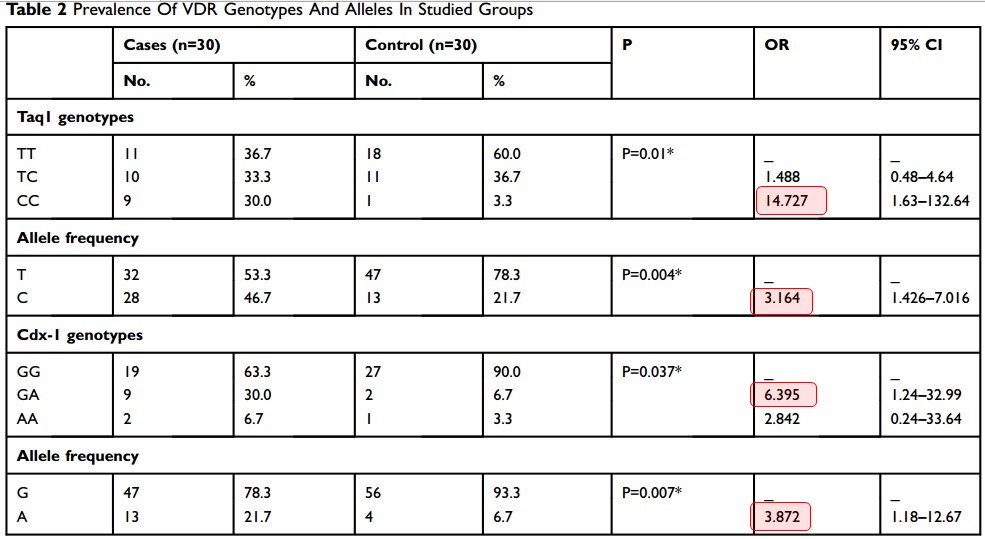Temporary hair loss (Telogen Effluvium) is 15X more likely if poor Vitamin D Receptor
Vitamin D Receptor Gene Polymorphism In Chronic Telogen Effluvium; A Case-Control Study
Clinical, Cosmetic and Investigational Dermatology October 2019 Volume 2019:12 Pages 745—750. DOI https://doi.org/10.2147/CCID.S227232
📄 Download the PDF from Vitamin D Life

Iman Seleit,1 Ola A Bakry,1 Eman Badr,2 Eman H Hassan1
1Department of Dermatology, Andrology and STDs, Faculty of Medicine, Menoufiya University, Menoufiya Governorate, Egypt;
2 Department of Medical Biochemistry, Faculty of Medicine, Menoufiya University, Menoufiya Governorate, Egypt
Correspondence: Ola A Bakry: Department of Dermatology, Andrology and STDs, Faculty of Medicine, Menoufiya University, Shibeen El Koom, Menoufiya Governorate 32817, Egypt, Tel +201065190509, Email [email protected]
Background: Telogen effluvium (TE) is a form of alopecia characterized by diffuse hair shedding. Vitamin D receptor (VDR) plays a role in hair cycle regulation as it is expressed in follicular keratinocytes and dermal papilla cells.
Purpose: To investigate the association between Cdx1 and Taq1 VDR gene polymorphisms and chronic TE.
Methods: Thirty female patients with chronic TE were selected and 30 healthy, age- and sex-matched volunteers were included as a control group. Detection of VDR gene polymorphisms Taq1 and Cdx1 was done by real-time polymerase chain reaction.
Results: Regarding Taq 1, CC genotype was present in 30% of cases versus 3.3% of controls. TC genotype was present in 33.3% of cases and 36.7% of controls. CC genotype was significantly associated with cases (P=0.01). It increases the risk of chronic TE by 14.7 folds. C allele was significantly associated with patient group (P=0.004).
It increases the risk of disease occurrence by 3.1 folds. Regarding Cdx1, AA genotype was present in 6.7% of cases versus 3.3% of controls. GA genotype was present in approximately 30% of cases and 6.7% of controls. GA genotype was significantly associated with cases (P=0.03). It increases the risk of chronic TE by 6.3 folds. A allele was significantly associated with patient group (P=0.007). It increases the risk of disease occurrence by 3.8 folds.
Limitations: The main limitation is the small number of cases due to the time and financial constraints. Only chronic TE was analyzed, therefore, other types should be investigated in the following studies.
Conclusion: After exposure to primary physical or mental stressor, hair follicles are stimulated to enter prematurely into telogen and shed out. In individuals with Taq1 and Cdx1 polymorphisms, the disease persists as a result of prevention of new anagen growth and inhibition of hair follicle stem cell proliferation.
From the web
“Telogen effluvium is a form of temporary hair loss that usually happens after stress, a shock, or a traumatic event. It usually occurs on the top of the scalp”
“Telogen effluvium (TE) is probably the second most common form of hair loss dermatologists see”
